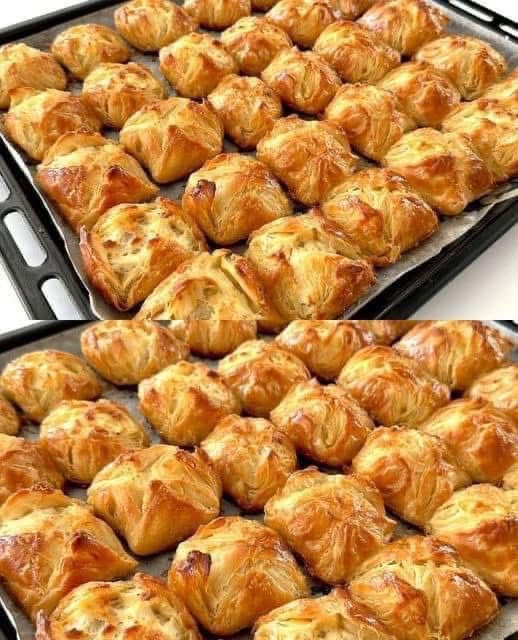Hard Crust Artisan Bread Recipe A Master s Loaf

Introduction
Hard crust bread is the kind of loaf that crackles when you touch it and sings when it cools. A hallmark of traditional European baking, especially French and Italian styles, it’s known for its crisp, golden crust and airy, chewy crumb.
I learned this method from a 70-year-old baking master who told me, “This bread doesn’t just feed the belly—it feeds the soul.” Since then, I’ve made it almost every day, perfecting the nuances of hydration, fermentation, and crust development.
This is not just a recipe—it’s a ritual, a living process that connects us with centuries of human history.
Ingredients (for 1 Large Loaf)
- 3 1/4 cups (420g) bread flour or all-purpose flour
- 1 1/2 tsp salt
- 1/4 tsp instant dry yeast
- 1 1/2 cups (360ml) warm water (about 100°F / 38°C)
- Optional: 1 tbsp olive oil (for flavor and crumb softness)
Instructions
- Mix Dry Ingredients: In a large bowl, whisk together the flour, salt, and yeast.
- Add Water: Slowly pour in the warm water while stirring with a wooden spoon or your hand until a shaggy dough forms.
- No-Knead Rise: Cover the bowl with plastic wrap or a damp towel. Let it sit at room temperature for 12–18 hours until the dough is doubled, bubbly, and jiggly.
- Shape the Dough: Turn dough onto a floured surface. Gently fold it over itself a couple of times to form a round or oval shape. Do not knead.
- Second Rise: Place the dough seam-side down on a parchment paper-lined bowl or banneton. Let rise for 1–2 more hours.
- Preheat the Oven: Put a Dutch oven (or heavy lidded pot) inside your oven and preheat to 475°F (245°C) for at least 30 minutes.
- Bake: Carefully remove the hot Dutch oven. Use parchment paper to lower the dough inside. Score the top with a sharp knife or razor. Cover and bake for 30 minutes.
- Remove the Lid: Bake uncovered for another 15–20 minutes or until the crust is deep golden brown.
- Cool: Let the bread rest on a wire rack for at least 1 hour before slicing.
Methods
Classic Artisan Technique:
- Hydration-Based Dough: This recipe uses high hydration (~72%) for a more open crumb and chewy interior.
- No-Knead Fermentation: Slow rise builds flavor and gluten naturally without kneading.
- Dutch Oven Baking: Traps steam to create a shiny, blistered crust.
- Scoring: Allows controlled expansion and adds a rustic, professional finish.
My Personal Touch:
- Stirring with bare hands adds a tactile connection to the dough (as taught by my master).
- Brushing the crust with water mid-bake for extra crackle.
History
Hard crust bread is ancient, dating back to Roman and Egyptian times. Peasant loaves in medieval Europe were baked in communal ovens with thick crusts to withstand storage and time.
In France, it evolved into the baguette and boule; in Italy, ciabatta and pane rustico. This recipe draws on all those traditions—slow fermentation, natural crust development, and rustic texture.
Benefits
- Natural Fermentation – Easier to digest and gentler on blood sugar.
- No Preservatives – Pure, wholesome ingredients.
- Crust Texture – Acts as a natural barrier, preserving the interior freshness.
- Lower Glycemic Index – Thanks to longer fermentation.
- Supports Gut Health – Through prebiotic flour breakdown.
Formation (Science of Bread)
- Gluten Network: Water + time allows gluten to develop naturally.
- Maillard Reaction: High oven heat caramelizes surface sugars, creating a hard, flavorful crust.
- Steam in Dutch Oven: Moisture from dough evaporates and bakes into the crust, creating shine and crackle.
- Scoring: Directs oven spring to prevent random tearing.
Conclusion
This hard crust artisan bread is more than a recipe—it’s a living tradition, a meditation in motion. It’s simple yet profound. A humble mixture of flour, water, salt, and time that becomes something greater through patience and heat.
When you bake it yourself, you’re continuing a human story thousands of years old.
Lovers of This Bread
- Traditional Bakers – Who respect slow methods and rustic results.
- Families – Who gather to slice warm bread fresh from the oven.
- Artisans – Who treasure the crackle of crust and aroma of sour fermentation.
- Home Chefs – Who crave simplicity and depth in one loaf.
- The Master Bakers – Like the one who taught me, who understand bread is life.
Nutrition (Per Slice – 1 of 12)
| Nutrient | Amount |
|---|---|
| Calories | ~120 |
| Protein | 4g |
| Carbs | 24g |
| Fat | 0.5g |
| Fiber | 1g |
| Sodium | 290mg |
| Sugar | 0g |
| Iron | 6% DV |
Second Conclusion
In every slice of hard crust bread, there’s craftsmanship, patience, chemistry, and history. Whether you eat it alone with olive oil, as a sandwich base, or alongside a hearty stew, you’re tasting the soul of the oven.
Second Lovers List (Because They Deserve It)
- Elderly European Grandparents – Who remember baking by smell, not timers.
- Children – Who love the crunch and pull of a good loaf.
- Campers and Hikers – Who carry it as a durable, flavorful energy source.
- Poets – Who write about bread as metaphor.
- You – Who commit to a ritual that connects you with the Earth, fire, and time.
Would you like me to create a printable version of this or help you set it up as a kitchen poster or booklet?